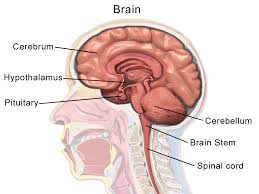Odds on, you haven’t given much thought to this system when you’re crushing your 5th set of biceps curls while making faces in the mirror because curls don’t count unless done in front of a mirror. But without it, lifting and staying upright is a problem. Do you know what it is?
It’s the Vestibular system.

The Vestibular system is located in the inner ear, and it’s about the size of a pencil eraser. This system is designed to send information about the position of the head to the brain’s movement control center, the cerebellum.

This system also ties into the visual system to stop objects from blurring when the head moves. It also helps you maintain awareness of positioning when, for example, you’re lifting weights. If any of these isn’t working as it should, it can affect your balance, and you and the floor could become one.
And not much thought is given to this system when you’re young, but as you get older, it becomes a big deal because good balance and a healthy vestibular system go hand in hand.
Let these facts from the CDC show why a healthy vestibular system is essential.
One in five falls causes a severe injury such as broken bones or a head injury.
Each year, 3 million older people are treated in emergency departments for fall injuries.
Over 800,000 patients are hospitalized yearly because of a fall injury, often a head injury or hip fracture.
Falls are the most common cause of traumatic brain injuries.
In 2015, the medical costs for falls totaled more than $50 billion. Medicare and Medicaid shouldered 75% of these costs.
Source: CDC website
Don’t be a statistic; start incorporating strength training exercises to prevent this.
3 Exercises To Improve Your Vestibular System
The following exercises emphasize good posture and balance, especially the position of your head and upper back, which keeps your vestibular system at the top of its game.
Front-Racked Kettlebell Bulgarian Split Squat
During your regular squats, the dominant side can pick up the slack for the weaker side, and improving your “weaker” side will reduce the injury risk, help increase lifting numbers, and lead to better flex appeal. If that doesn’t convince you, this squat will improve your hip mobility, upper back strength, and the size of your quads and glutes.
Form considerations: Perform a bodyweight elevated split squat, notice where your big toe is, and then place a weight plate in front of it. This will give you a reference point and shorten your setup time between sets. Keep a nice tall chest and your wrists neutral during this exercise.
Programming suggestion: pairing this exercise in a superset with a single arm row is a real upper-back whammy. For example:
1A. Front-racked kettlebell elevated split squat – 12 reps on each leg.
1B. 3-point dumbbell row– 12 reps on each arm.
Suitcase Carries
The Suitcase carries strengthens grip imbalances between hands which can be a limiting factor when pulling heavy or opening a pickle jar. And many of us favor one side when carrying bags over one shoulder or hand. This can result in tilting our body over to one side to compensate.
Over time, this may cause posture problems, and unilaterally carrying a heavy dumbbell/kettlebell can help iron out any strength and posture imbalances.
Form considerations: cues “shoulders down and back” or “chest up” works well here. Checking your form in a mirror will help if you’re having trouble knowing if you’re tilting over to one side or not.
Programming suggestion: pairing them with an exercise that doesn’t require a lot of grip strength works best when performing supersets. For example:
1A. Bench press variation
1B. Suitcase carry- heavy 20 steps in one hand, then 20 steps in the opposite hand. (Approximately 50% of body weight)
Or:
1A. Squat or hip thrust
1B. Suitcase carry- heavy 20 steps in one hand, then 20 steps in the opposite hand.
Pullover Deadbug
The pullover with the deadbug will counter lower back extension (when reaching overhead) and help stretch the lats while preventing the dreaded rounded-shoulder look. All this makes it an excellent exercise for posture.
Furthermore, it doubles as a killer core stability drill, essential for moving big weights safely and keeping low back pain at bay.
Form considerations: include keeping your lower ribs down, avoiding lower back hyperextension, and performing at a controlled pace. Breathe as you lower your weight and leg towards the floor, and breathe into your belly as you reverse the movement.
Programming suggestions: pair this exercise in a superset when the neutral spine and core stability are essential. For example:
1A. Overhead, back, front, or goblet squat.
1B. Pullover with deadbug – 12 reps (six on each leg)
Or if it’s chest and arms day, pairing this exercise with any bench or overhead press variation also works. For example:
1A. Dumbbell bench press
1B. Pullover with deadbug – 12 reps (six on each leg)
Wrapping Up
Training is not all about looking good; it’s about staying healthy, also. And rather than waiting until it’s too late, start incorporating exercises that encourage good balance, posture, and a healthy vestibular system. This will keep you at the top of your game for longer.
And not on the ground.
.
Leave a Reply